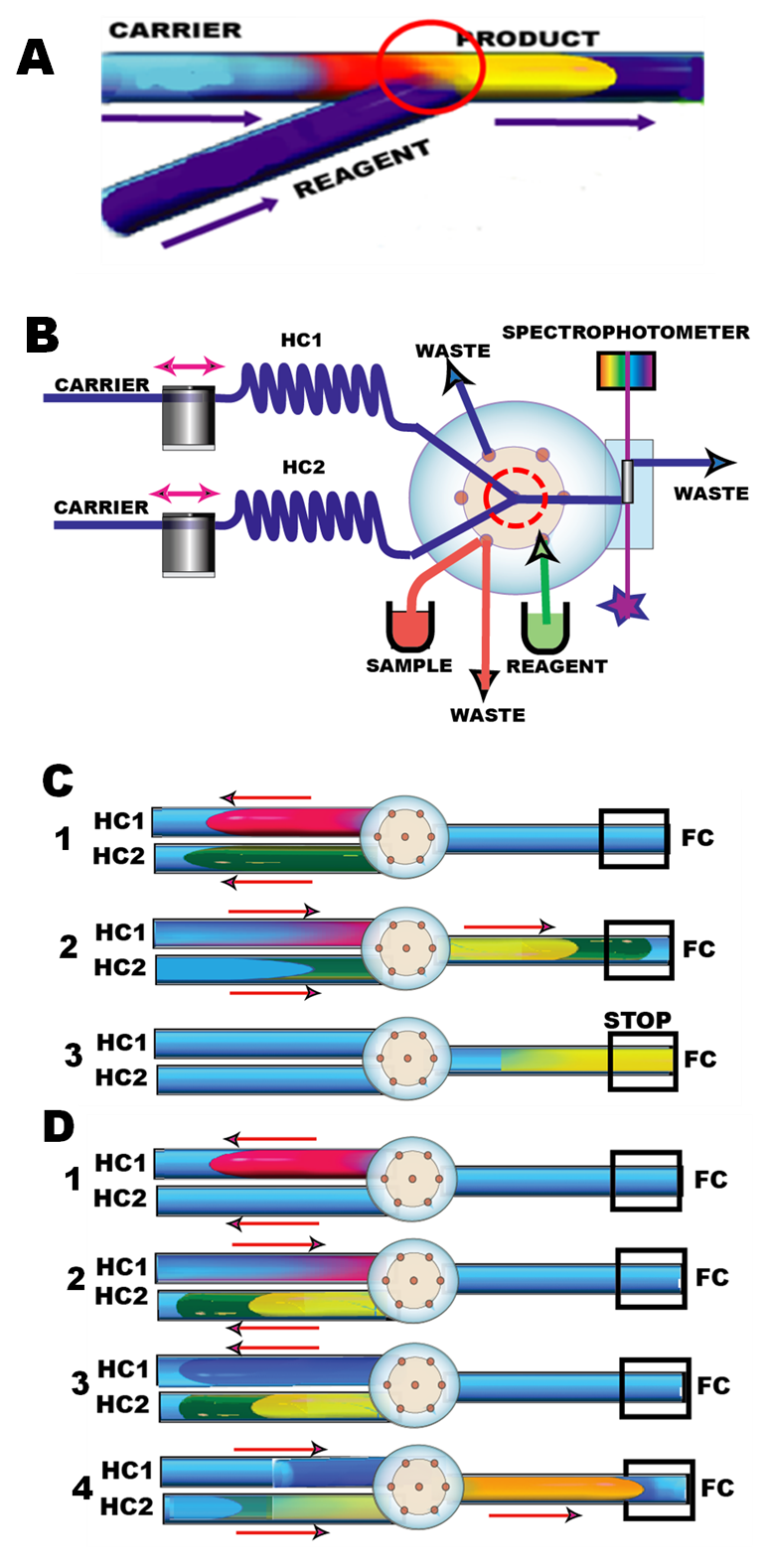Next in Methodology: Programmable Flow Injection
2.2.42.B.
Though this be madness, yet there is method in it.
W. Shakespeare
There are two limitations of miniSI method; the volume of injected sample can not exceed 100microliters, and miniSI can handle only single or two reagent assays, because in a single line system long multiple zones will not sufficiently overlap and mix. These restrictions do not apply to Flow Injection technique, since mixing takes place at the confluence point (A) where reagent is merged at a steady flow rate along the entire length of sample zone (0.2.10.), and where multiple reagents can be added via several confluence points arranged in series between injector and detector. Processing large sample volumes is necessary for trace nutrients assays, where desired sensitivity is obtained trough analyte preconcentration (Grand 2016), or by filling long light path flow cells. The obvious solution is to combine features of SI and FI methodology by incorporating the confluence point within LOV manifold served by two pumps (B). This flow configuration removes limitations of SI technique and enhances performance of Flow Injection beyond its capabilities limited by continuous flow.
There are many, yet unexplored ways, in which microfluidic manipulations can be programmed around the confluence point (1.2.27.). The simplest assay protocol for single reagent SFC assay has the following steps:
1) sample (red) is aspirated into HC1 followed by reagent (green) aspiration into HC2.
2) Sample and reagent zones are propelled simultaneously towards a detector, while the reaction product (yellow) is formed downstream from the confluence point.
3) reaction mixture is arrested in the flow cell for incubation and monitoring of reaction rate.
Example of application of this protocol is the spectrophotometric assay of nitrite. (1.2.32.).
Two reagents (D), or multiple reagents protocols in SHC or SFC format are based on further expansion of this scheme. (1.2.27.)
Comparison of merits of the traditional, continuous Flow Injection (cFI) the new programmable Flow Injection ( mini pFI) and mini SI (1.2.42.) can only be tentative at this early stage of pFI development. Yet, for one and two reagent assays mini SI might be preferable to cFI and mini pFI since it uses a simpler, single pump instrument. On the other hand, since mini pFI is conceptually similar to cFI, the traditional cFI reagent based assays should be easily accommodated in mini pFI format.
Grand M.M, Chocholous P. et.al. Determination of Traces of Zn in Sea Water by Coupling SPE and Fluorescence Detection in LOV Format Anal. Chim. Acta 923, (2016) 45.










